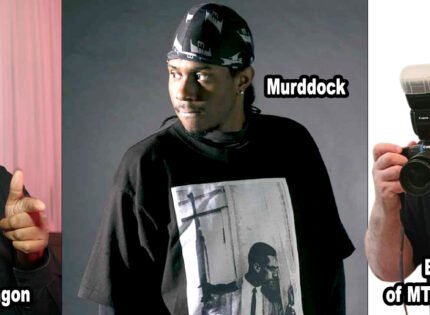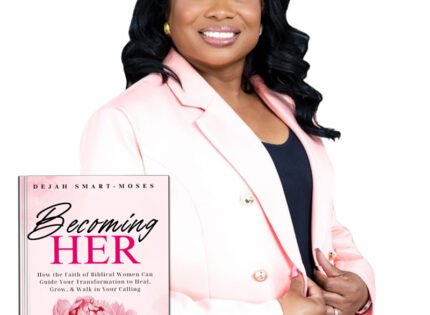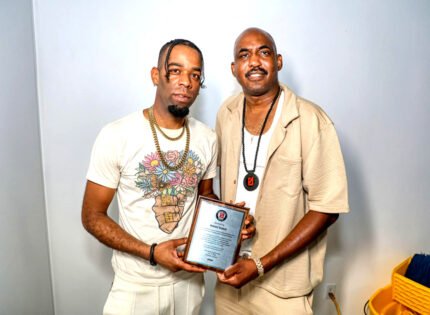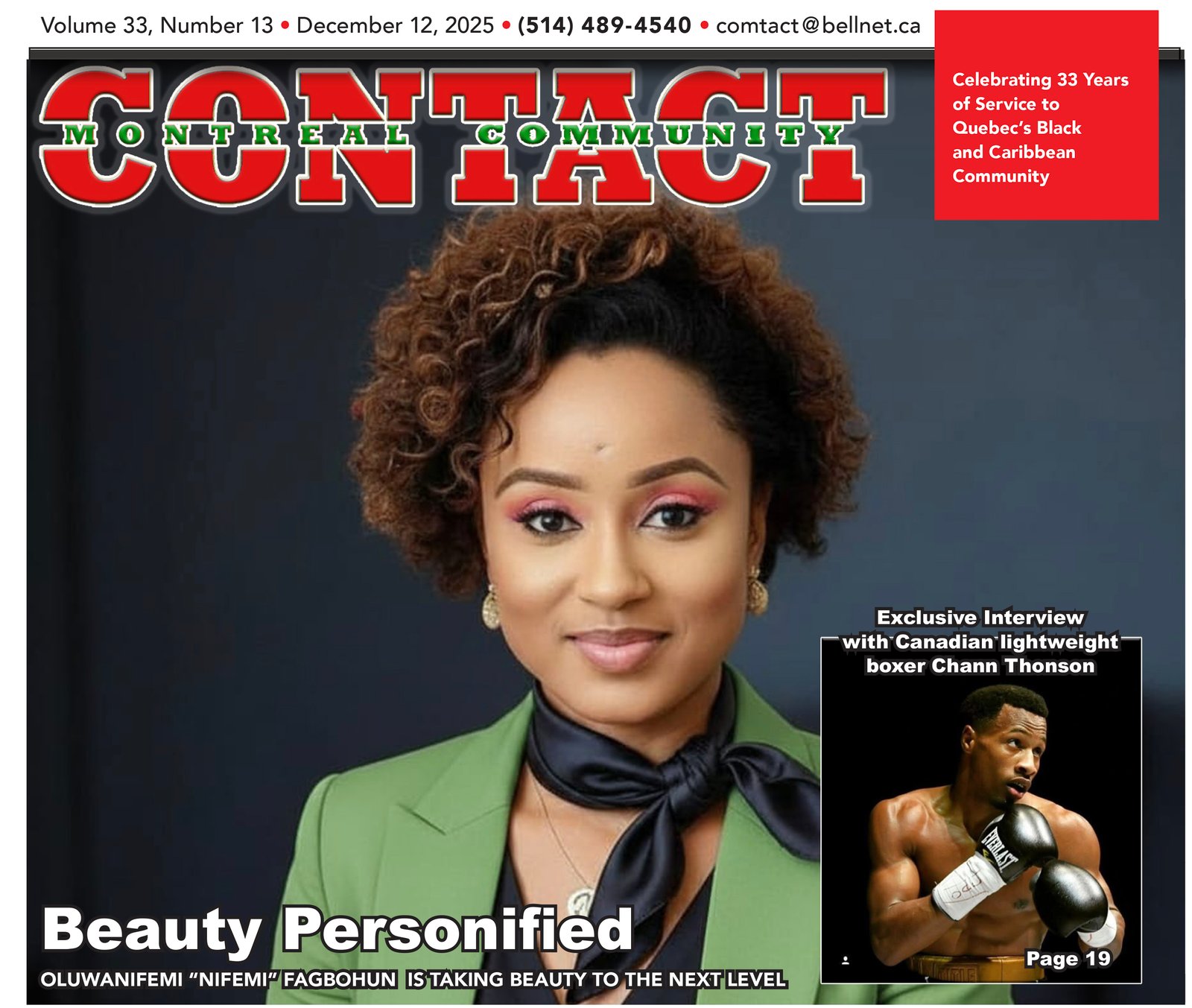Curator eunice bélidor’s timely exhibit THE TRACES THAT REMAIN: her first as an independent curator, explores the traces left by significant events on our bodies and minds. How do we capture these intangible after-effects? Presented as part of MAI’s (Montréal, Arts Interculturel) first-ever “carte blanche” series, gives a curator complete freedom to design the gallery as they see fit. The Traces That Remain is an exhibition featuring artists Shaya Ishaq, Po B. K. Lomami, Zinnia Naqvi, and Lan Florence Yee.
Conceived around an observation shared by both curator and artists, this exhibition is based on the premise that an archive is much more than a collection of elements that form the whole of an individual or a collective. What an archive contains can take many forms and be expressed in many ways. Most striking, however, is what an archive does not include: absence can reveal even more. Through the multidisciplinary practices of artists Shaya Ishaq, Po B. K. Lomami, Zinnia Naqvi, and Lan Florence Yee, The Traces That Remain question the non-tangible repercussions of situations that have left deep and often invisible marks in the banal or salient events that occur in life. Community Contact sat down with eunice prior to the opening of the exhibit.
eunice bélidor, (who does not use capital letters in her name), made world news when she first joined the Montreal Museum of Fine Arts as the Gail and Stephen A. Jarislowsky Curator of Quebec and Canadian Contemporary Art (1945 to today), as the first full-time Black curator in the institution’s 161-year history. She holds an MA in Art History with a Graduate Diploma in Curatorial Studies from York University. Additionally, she won the prestigious Emerging Curator award from the Hnatyshyn Foundation in 2018. Having already organized numerous exhibitions both nationally and internationally, and being a published writer who enjoys a solid reputation as an arts researcher, eunice joined the growing field of Black Curators around the world. Joining the Museum seemed like the stars were aligned and a match was made in heaven.
After curating only one exhibition, Views of Within, bélidor stepped down from the position, having worked at the museum for only two years. As cited in her March 2, 2023, interview with Hyperallergic, that her hiring was a Black Lives Matter hire. So much for the inclusivity wave of change at the MMFA post-George Floyd. It was just another goal post moved beyond reach, yet again.
There are many of us who have trod similar paths in Quebec, where we see openings ever hopeful as we apply, thinking that some of these spaces have truly reconciled internally in a meaningful way when they say they want Black Quebecers to be a part of change, only to see that on the backend, institutions like the MMFA are not willing to do the work required to support true change. Ironically, in eunice’s case, the museum head-hunted her and she left a satisfying job for what she thought was the dream job.
Creatives create. bélidor’s success came long before her stint at MMFA and with her curation of Traces, and the collective artistry of the artists, future successes are coming and we are reminded that it is not institutions that give life, but it is both the bite and bark of the artist’s voice that saves the day.
Community Contact sat down with eunice bélidor at the MAI.
PD: You seem happy and in a better space.
eb: I am, but it has not been easy in the last year. Although I feel freer now, for some time, I wondered if I made the right decision to go public. With all the opportunities I have had and the things I have lived through in the last year, I know that I would not have had these things if I had stayed.
PD: You worked in Quebec, you studied in Quebec, you worked in Ontario, and studied in Ontario. The differences? Where are we aligned?
eb: I was born here in Quebec, I speak French, but I will never be from Quebec. When I was in Ontario, I was the person from Quebec. That was funny. When I was thinking of exhibitions, working with curators Gaëtane Verna, when I was working with Karen Carter, talking about race was not necessary. Whatever work I do here in Quebec, everyone says “…You’re the curator supporting racialized artists.” I am working with artists that I am surrounded with. They could be from anywhere. People from Ontario are not thinking in this way which made me free to think about other things.
PD: Is there pressure as a Black curator to always include racialized artists?
eb: I think there was a pressure not necessarily to include them but to be the one to include them. People will not expect a Black curator to curate only artists of colour but if artists of colour were to be curated, it would have to be by a curator of colour. When I worked in artist-run centres, I was made to feel that it was my responsibility to have to address diversity and race, but we are all working in the same field. We work with the same artists: why is it supposed to be my responsibility, why can’t it be something that we all do collectively…
PD: We supposedly work in the same field, and that’s why I asked the question. I don’t have a sense having done all my professional work based here in Quebec, whether we’ve leveled the playing field. The Quebec-Ontario questions become an issue for me. This is why I invite you to share your feelings. Ontario-Toronto, you said it, with Gaëtane, with Karen we speak the same language. I want to hear from you, are you ready to start the questioning gaze of white artists, Black artists? Do that conversation?
eb: I am not selecting artists because of their race. I’m selecting the artists if we have something in common. Whoever has something in common will be put in an exhibit together. I like to think of it as a hybrid or a mix. I’m really trying not to look at race because I don’t see why I should. I mostly have things in common with artists of colour because we work in the same field, we are put in the same basket so because of that, some of our conversations are the same. I have relationships with white artists that I’d love to work with. The time or the project just has not materialized yet.
PD: Institutions vs galleries. Where should artists be?
eb: It really depends on where they are in their career. I’m a big advocate of the artist-run centre model because this is a good place for an emerging artist or artists who want to explore something different. Artist-run centres are where you can test things out. I think artists should start there because it is a good place to ask questions, to get your practice closer to the community.
Then we have different types of institutions. The museum is the last stop, kind of when you’ve done it all. I was in a residency in France at the beginning of the year for two months. I learned about art centres that are galleries that are funded by the different levels of government, and it’s specifically made for the artists. They have a lot of money for production. So, if you have a very big project, they could do it through the art centre model. In Montreal, we do have a centre like that which is the Darling Foundry. I feel that the Darling Foundry is a good place for artists to be because they can experiment and do things in a bigger format.
The artist-run centres have less money: they are ideal for artistic exploration, but not always in material support. In Toronto, it is the Power Plant, a similar model to the Foundry. At Power Plant, Gaëtane Verna did a great job: it was an art centre where artist’s projects could be greatly supported, and it would then be a pivot for them to be presented internationally and go beyond the types of models that we have in Quebec and in Canada.
PD: Are we crabs in a basket with respect to Black artistry? As soon as you crawl up, I pull you down because there are not enough spaces.
eb: I would like to believe that it is not the case but at the same time, sometimes I make myself believe that because I don’t want it to be true. I feel that the moment, when I started my career, I had role models: I had Dominique Fontaine, Gaëtane, and even Karen in Toronto. There was always this message that I was the only one but that was not the case. So, the crabs in the basket situation are created by people other than us.
PD: There are now so many ways to exhibit work thanks to today’s technology. Is there a need for traditional spaces to cede space to under-represented voices or should artists just rely on pop-up shows, digital spaces, or alternative venues to speak their truth to power?
eb: I think everything can happen at the same time. I think you can do your pop-ups and have your alternative presentations, but you should also be a part of the milieu and go to the traditional spaces or else you will always end up working in the margins.
PD: Financing. Are we seeing under-represented voices being funded from the various grants, private or public, or is it that money continues to go to traditional spaces in huge quantities? What’s going on?
eb: Artists of colour can be funded in Canada. The Conseil des Arts et Lettres du Québec is notorious in the milieu for not being able to support many artists. The Canada Council gives good funding, and they have a strategic plan to make sure that artists of colour and Indigenous artists get funding. And it’s working. When I look at the different programming at artist-run centres, I see the difference. After the pandemic, there has been a noticeable change with artistic representation.
PD: When you were curating Traces, did you have an audience in mind?
eb: I always have the same audience in mind. People like my parents who have no idea what I do. I am doing exhibitions for people who either didn’t have access to art exhibitions or do not know how to relate to them. They do not need to be in the field or know artists; they want to talk about something they heard about or that they are feeling. I want my parents and my sisters to come to my shows and feel seen without having to know about art history in order to understand.
PD: How do we develop a Black audience in Montreal?
eb: That is a good question. I don’t always know who goes to the exhibitions. One of the exhibits I curated was Over My Black Body at Gallerie D’UQAM. I didn’t know who the demographic was and who saw the show. For a long time, I was known as the curator who did that show, so I could tell that there were some Black people who went, but I never really knew.
PD: Is there a need in Quebec within institutions to track and keep as art producers or artists who go to the shows? Some of the various forms for funding you have to know the audience, but unless you sit there and track and do it yourself you can’t know. Is there something we should be doing or are not doing that should be done?
eb: One thing that I noticed when the news of my position was highly publicized. I come from St-Michel so people were recognizing me, “Oh my God! We saw you on the news and we are so happy for you.” I guess the fact that I was so visible in the newspaper made people aware of what I was doing.
PD: But we don’t know if they went.
eb: That’s the thing. Did they go to the museum, I don’t know.
PD: Your bio speaks to questioning as a methodology. Writing and creating curatorial auto-theory that is at the intersection of letter writing with care for feminism and racial education. In your words, who are you?
eb: I hope not to be defined by my job.
PD: Is it a job?
eb: Being a curator is a job. I don’t want to mix my personal and professional life, curating is something that I do professionally but at the same time, the way that I view curating is to put artists and the public in a relationship and I know I also tend to do that in my personal life. My personality is included in the way that I do my work. When I talk about questioning as a methodology, when I think about an exhibit that I want to create, I ask myself a question and I collaborate with artists as a way to find answers to these questions. Often, when an exhibition is up, I look around. Did I answer the question fully? Are there more questions that I should have asked? Am I missing something? All of the exhibitions that I’ve curated even though they are not the same, they are all trying to answer the same type of questions.
PD: This is a defining exhibit for you.
eb: Yes!
PD: For many reasons. We’ll leave the elephant out of the room. What are the significant events in the artists’ gaze? What are the questions in your curatorial gaze or questions? Break it down for me.
eb: When I was invited by Camille Larivée to be the guest curator, they mentioned the theme: the fire burning within us. When they invited me, it was about a year ago and I was slowly recovering from the elephant in the room: the fact that I had gone through something that would leave marks on my body and eventually I would forget it and eventually life would go on, but it would be forever in me.
I had conversations with many friends and with one of the artists in the show, Po B. K. We first had this conversation during the time of suffering. Po’s practice is that of a performance artist. We were talking about the fact that they consider themselves a performance artist, but they do interventions. When you do performances, you can film it or take a photo and keep an archive of the performance, but you won’t be able to keep an archive of the intervention. The interventions are usually done one on one. That was where I got the question, “How do you keep traces of things that are invisible? How can you make sure to highlight things that seem to have disappeared?”
I had a studio visit with Shaya Ishaq in 2021. Before then, I had seen her exhibit at SAW Gallery. She had an installation around her project, Black Libraries Matter, and she was looking into how to keep traces and histories through books. I saw her work and a lot of it is sculpture and textile-based work. Her mother, grandmother, and women in her family have histories of being weavers and are in textile making. We were talking about how you keep the transmission of these practices. She had lost her grandmother and wanted to keep these transmissions alive.
All the conversations I had with the artists were around how do you keep things that we know happened, but you can’t put your hand on it.
PD: If I am hearing you and understanding you correctly, there are invisible whiplashes from the sometimes our bodies get injured, sometimes our minds. How do we preserve that? How did you research this for this exhibit?
eb: It was really through conversation on how their work was relevant to this topic. A lot of how this exhibit came about was more about an effect than scholarly research. I really did not read books. It was more, something happened to me, and the artists had similar things happen to them.
It was mostly embodied research, or research that came through discussion. Last spring I was invited to Toronto to give a lecture at York University, and I visited Zinnia Naqvi and Lan Florence Yee in Toronto. Zinnia is talking about an Asian professor in a university in Toronto who had a case of discrimination and because he fought it, it took a long time for it to be resolved. She discovered this project while looking through archives in Toronto. What she didn’t get from the archives but got from speaking with the professor about the ordeal was that his daughter killed herself. You don’t get to read these things even when you look in archives.
I am interested in things you can and cannot find in archives and why things are not included in archives. When I was working at the museum, I was supposed to find all the blind spots and diversify the collection. At the same time, there are reasons artists of colour are not in the archives. It is not that they are omitted but that there was a conscious choice not to include them in the collection. Including artists in a collection builds the art history that you want to create for the institution and for society. If you want your art history to look a certain way, then you have to make sure that you don’t include specific things. These were the things that I was thinking before I got invited to do this show, and they are the things that nourished this process.
PD: Reclaiming your voice as an independent curator does this give you a certain freedom?
eb: Yes. I have much more freedom. When I look at the independent curating projects that I have done, I was never forced to align my project to the mandate of the institution. Sometimes I did because you have to, but not in a way where I felt that I was stifled. Because this is my first project as a fully independent curator, I decided to focus on something pressing.
PD: Your mouth belongs to you.
eb: Yes. I was invited to do something as an independent curator, so I took the opportunity as it was offered. I was not invited to respond to the programming or anything like that. I was going to do exactly what I wanted to be doing at the moment that I was invited.
PD: What is your personal creative process when choosing artists to work with? How long is your career? Up until now, how many of the shows have you created? How many of the shows were invitations like this one vs institutions or traditional spaces.
eb: I was invited for two exhibitions, this one and one exhibition in 2021 at Musée d’Art Contemporain. I was invited to Musée d’Art Contemporain as a guest curator to acquire works for the collection and then we did an exhibit out of these acquisitions as I thought it was important to present the work right away that we acquired. For these acquisitions, I had some constraints, as I had to make sure the works did not take up room in the vaults as they were about to move. I gave myself some constraints since I was acquiring works for the Musée d’Art Contemporain of Montreal, I wanted to acquire works from artists living and demographically representing Montreal. I did not want to acquire artists already represented in any collection. These were the limits I set for myself for it to be more relevant to how I usually do my work. I was still free to acquire the works of the artists that I wanted to.
THE TRACES THAT REMAIN: An Exploration of the Intangible Moments of Grief, Change, Resilience continues at the MAI until June 15, 3680 Jean Mance for additional information 514-982-1812

















